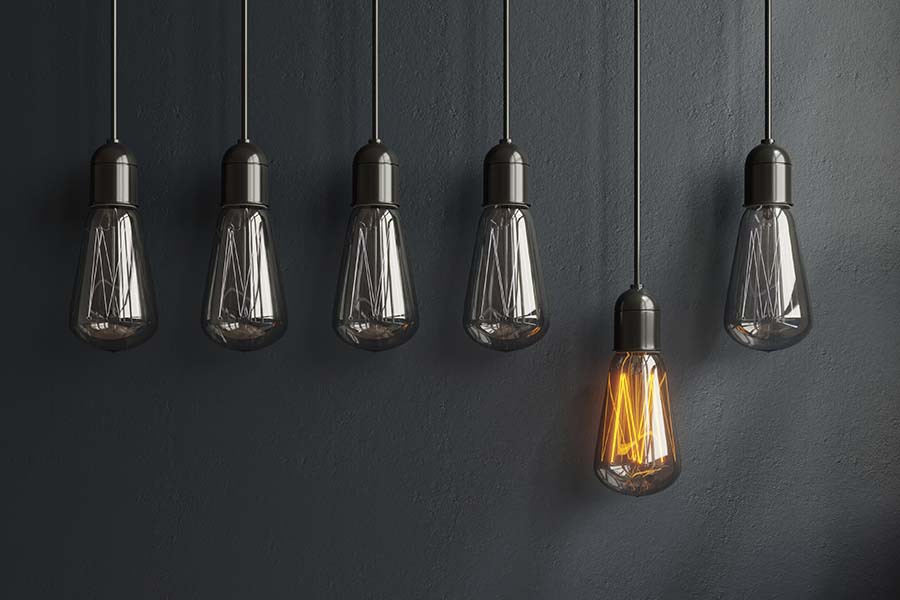While many of you may be dubious of the odor, others may detect a familiar burning stench radiating from the lightbulb. The essential thing to do would be to switch off the light switch right away.
Then, when the fixture and bulb have cooled sufficiently, detach them and unplug them from the socket.
Some most common reasons that can explain why your light bulb smells like burning plastic and their solutions are explained below,
Overheating
While there might be a variety of causes for the mysterious burning smell, one of the most frequent and prevalent is, of course, overheating.
If a light fixture emits a burning odor, turn it off until you find the cause of the stench.
Overheating power cables and gadgets can cause your light bulb to give a burnt odor. Never use the fixture afterward unless an expert has fixed it.
Lack of ventilation
In unventilated setups, the primary and weak circuitry in the base of Led lights can overheat and effectively destroy the delicate electrical chips within the LED’s core, particularly semiconductors and capacitors.
Because of the retained heat, the scent might also be caused by other nearby assemblies cooking. Wall paneling, insulation, plastic components, and various other items inside a ceiling may be somewhat burning.
When exposed to a recently changed light bulb, anything as essential as the ceiling paint layer may melt and emit an odor.
A simple remedy is that installing a basic insulation guard around the fixture would provide a gap between the bulb’s housing and circuitry and the dense insulating layer within the ceiling.
You may also swap the LED lights for a lower wattage, which is a pretty simple fix. This decreases the lumens and thermal load that may be produced.
Higher wattage bulb
When a greater wattage bulb is utilized, it frequently overheats the environment. Similarly, choosing a larger bulb for the fixture might cause issues due to restricted ventilation around the light.
The smell of burning may result in standard incandescent light switches if you use a large lightbulb or greater power than that unit’s advised power. Examine the fixture’s capacity and the light bulb power.
Check that the lightbulb is effective in allowing for heat dissipation surrounding the fixture.
Furthermore, a full cleaning around and on the bulb fixture every week can allow your lights to live a lot longer without emitting unwanted odors.
Malfunctioning electric circuit
A faulty electrical connection at the junction and a broken screw could also potentially be the cause of the problem. A faulty connection can cause additional resistance to the power supply, which leads to heat generation.
Heat exposure can cause metal connectors to stretch and shrink, ultimately weakening them. This heat has the potential to damage insulation and possibly cause a fire.
It is a fairly common problem with LED light bulbs; most of the time, the problem is connected to the fixture, and the current flows from the outlet.
However, electrical troubles can sometimes cause this difficulty.
The first important thing to look at is the space around the light fixture. Remove the power before removing the lightbulb from the fixture.
If the plastic around the fixture begins to melt, the lightbulb wattage is definitely high.
When the current flow is too great, the fixture frequently melts due to the heat created. If you smell burning plastic from around the led light fixture, it is highly probable that your bulb is pulling too much energy.
In this case, you may either consider replacing the fixture with a superior one or replacing the Light bulb with a lower wattage that will not generate quite enough heat.
Poor quality bulbs
This problem is particularly frequent in low-cost LED lights with faulty base circuitry. So, if you’re using a cheap and poor-quality LED bulb, it’s best to replace it with a more dependable model.
Some consumers had also reported that when they examined the fixture, there were a couple of dead insects and bugs caught within, which also caused the plastic to burn.
So, when you sense burning plastic, it’s usually better to remove the lightbulb from the fixture to see whether there is anything caught between both points of contact.
Debris caught between the points of contact will also provide extra resistance, heating the fixture and leading it to burn.
You are supposed to switch off the electricity to the fixture and then use a vacuum to clean out any dust or pests. And after, simply replace the lightbulb, and the odor will just go away.
Most of the time, this problem only happens with low-cost LED light bulbs with faulty wiring. Therefore, the very first step in resolving this issue is to determine the light bulb wattage.
If it exceeds the threshold capacity of your fixture, you should use a lesser bulb.
Trying to remove dust and dead insects from your fixture often will solve the problem, but ensure to turn off the power carefully.
